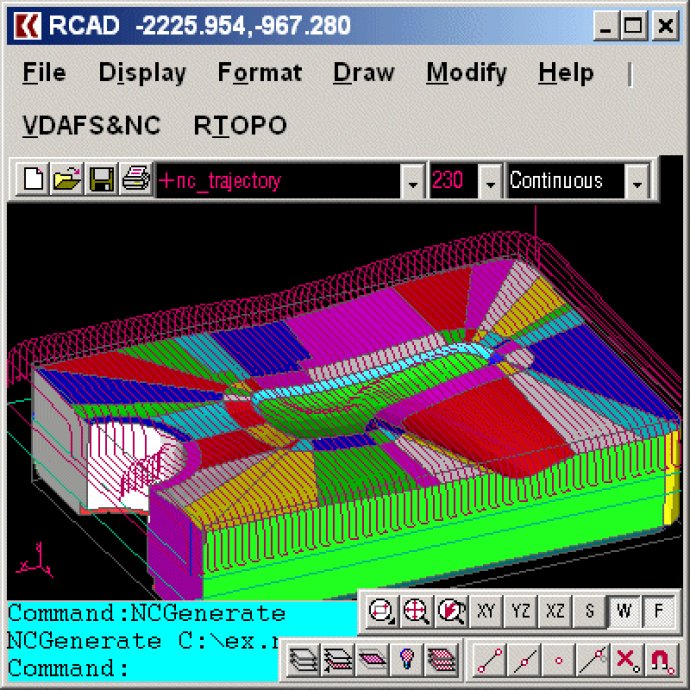The software converts VDAFS files to DXF files in 3DFACE entities and creates an NC program for milling. With the RCAD core features such as real-time orbit, pan, zoom, shading and lighting using OpenGL, STL files can also be loaded.

When interpreting the VDAFS file, the program can identify entities of type PSET, FACE (created from entities of type SURF and CONS), and possibly those of type SURF. 3DFACE entities may originate from 3DFACE or 3DMESH entities from DXF files, from STL ASCII files generated by AutoCAD for solids, or from the RCAD '3DFace' command.
It's important to note that the 3DFace entities that describe the surface may not be perfectly joined or intersected. Regardless, the milling cutter with a semispherical head will always be positioned above and tangent to the assembly of 3DFace entities.
Users also have the ability to divide the piece into two parts using either a horizontal separation plane or a certain separation surface. The program can also calculate the 3D area, volume, and center of gravity of some bodies limited by 3DFACE entities.
One standout feature of this software is the graphic core provided by RCAD, which is distributed alongside VDAFS to DXF&NC. This core includes real-time orbit, pan, zoom, shading, lighting, and motion path animation using OpenGL technology. Overall, this program offers an efficient and flexible solution for converting VDAFS files and generating NC programs for milling.
Version 2.8: It can be purchased with a 1-year subscription.